
Search cheap and promo Cebu Pacific flight tickets here!
Search and book cheap flights with Cebu Pacific
Routes
Schedule
Price from
Best Flight Deals in Philippines
Airline Facilities

| Check-in Baggage |
|---|
| 15/20/30/40 kg |

| Cabin Baggage |
|---|
| 7 kg |
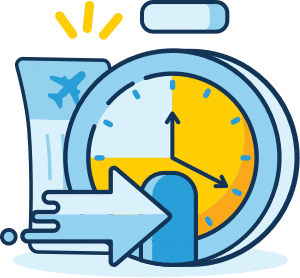
| Check-in Time Limit |
|---|
| 1 hour before departure |
Flight Services in Traveloka
Smart Combo
With Smart Combo tickets from Traveloka, you can book premium-service flights at up to 40% off. Enjoy flights with Air France, Cathay Pacific, Etihad, Garuda Indonesia, KLM, Lufthansa, and Singapore Airlines at a more affordable price. All you have to do is find the flights marked Smart Combo, then select the flight that suits your needs
Multi-city Flights
High Flexibility Ticket
Baggage
Seat Selection
In-flight Meal
Refund
Reschedule
Online Check-in
Price Alert
Flight Status
About Cebu Pacific
Cebu Pacific: An Introduction
Cebu Pacific is one of the most famous private airlines in the Philippines. Since 1996, Cebu Pacific has become a pioneer in serving affordable long-haul flights with the tagline “Low Fare, Great Value.” As a low-cost carrier, Cebu Pacific has served more than 140 million passengers across 30 international flight routes and 38 domestic flight routes. Although it only has one class per flight, it has received such accolades as Budgies and Travel Awards 2012 Low-Cost Carrier of the Year and LCC CEO of the Year.
Cebu Pacific Seat Class
Economy Class

Offering only Economy Class across all flights does not mean Cebu Pacific does not care about quality. All Cebu Pacific flights allow up to 20 kg of free baggage and 7 kg of free cabin baggage per passenger. Passengers can also purchase CEB Air Internet Access, priced from $5 for the first one hour to $12 for the entire length of the flight. On top of the internet access, passengers also have access to different kinds of entertainment, from Hollywood and Filipino movies, to music and a bookshelf rich with local content.

In-flight Meal
Cebu Pacific provides a variety of meals ranging from basic instant noodles to delicious Filipino cuisines. Some of the interesting local Filipino menus that passengers can enjoy onboard are Caldereta, Bistek Tagalog, Chicken Adobo, and Chicken Barbeque. Passengers can also enjoy snacks such as cake, ham and cheese croissant, tuna roll, as well as creamy cheese bun. Cebu Pacific also serves specific menus to accommodate passengers with dietary restrictions.
Cebu Pacific Privilege Programs

GetGo
Cebu Pacific always aims to provide the best offer for its passengers. Therefore, Cebu Pacific offers special benefit through the GetGo program, which gives free flights to loyal passengers. To participate, passengers just need to register themselves through https://www.getgo.com.ph and collect as many points as possible from buying flight tickets or add-on products, such as prepaid baggage, seat selector, pre-ordered meal, or even sports equipment allowance through Cebu Pacific. The points can be redeemed for a free ticket and some of the previously mentioned add-on products.
Cebu Pacific Fleet
Airbus A330

- Economy
Not Available
- 3-3-3 (Economy)
Not Available
- 28 inches (Economy)
Not Available
Cebu Pacific In-flight Crew

Cebu Pacific Flight Attendant Uniform
In celebration of its 20th anniversary as one of the famous low-cost carriers in the Philippines, Cebu Pacific launched a new flight attendant uniform. The new uniform looks more casual, comfortable, fresh, and polished. The cabin crew uniform looks more cheerful in bright yellow color top and denim trousers and skirt. Cebu Pacific’s female flight attendants now wear a beautiful bright yellow long-sleeve blouse or a short blouse adorned with a tropical green, yellow, black, and white scarf, which represent the airline’s identity. They also wear A-line denim skirts in copper. The male flight attendants, on the other hand, wear a more casual yellow polo shirt with denim trousers. This new uniform makes the flight attendants more approachable by allowing them to move swifter and easier while on-duty.
Cebu Pacific Baggage Allowance
Flight Route | Seat Class | Cabin Baggage | Check-in Baggage |
All routes | Economy Class | Max. 7 kg (Dimension: 56 x 35 x 20 cm) | Available upon purchase: 15kg / 20kg / 30kg / 40 kg |
Cebu Pacific Passenger Policy
Infant Passenger Policy (0-2 Years Old)
- Infants below 8 days old are not allowed onboard. Exceptions can be made if the infant passenger is accompanied by an adult during the flight, who can produce a recommendation letter from a doctor stating that the infant passenger is fit to fly.
- Cebu Pacific will charge a minimal handling fee for an infant passenger not requiring an infant seat.
- If the infant passenger needs an infant seat, please make sure that the seat has been approved by the Federal Aviation Administration along with the adjusted ticket fare.
Child Passenger Policy (2-12 Years Old)
- Children younger than 7 years old must be accompanied by an adult passenger (older than 18 years old).
- Children can travel alone if they are at least 15 years old, with additional fee applied.
- Children traveling alone must be accompanied by their parent or guardian during check-in.
- Children traveling alone must provide additional documents and handling form, which must be filled by the children’s parent or guardian. These documents must be submitted to the airline during check-in.
Pregnant Passenger Policy
- Pregnant passengers are allowed onboard, but need to report her condition to the airline during check-in.
- Passengers with a pregnancy of 34 weeks or above must provide a medical certificate signed by a doctor, stating that the passenger is fit to fly.
- Pregnant passengers flying to or from the United States must provide a health certificate issued no longer than 10 days prior to departure.
Disabled Passenger Policy
- All passengers with disability must provide a medical certificate signed by a doctor, stating that the passenger is fit to fly. The medical certificate must be issued no longer than 10 days prior to departure.
- Cebu Pacific does not allow passengers with certain medical conditions that may require specific medical devices such as incubator, oxygen tank, ventilator, or respirator onboard.
Cebu Pacific Check-in Policy
Cebu Pacific Check-in Time
Please find the check-in time for all Cebu Pacific flights on the table below. Check-in time may vary if your flight is operated by a partner airline. Please check your e-ticket to ensure.
Flight Route | Recommended Check-in Time | Check-in Time Limit |
All Routes | 1 hour before departure | 45 minutes before departure |
Cebu Pacific Online Check-in
Online check-in is also available for Cebu Pacific flights. Please follow the steps below.
- Go to Cebu Pacific web check-in page
- Enter your booking code, or other booking details, as instructed
- Complete your check-in details
- Save and/or print your boarding pass
Cebu Pacific Refund Policy
In general, refunds are permitted for personal reasons (self-cancellation, sickness, pregnancy, or death of a passenger), cancellation/rescheduling by the airline, force majeure, or double booking. However, different airlines have different policies regarding acceptable refund reasons. Please visit Cebu Pacific Refund Policy for a complete information on refund.
Cebu Pacific Reschedule Policy
You can easily change your flight schedule and itinerary using Easy Reschedule. Some airlines allow changes to date, time, route, and airline, while some only allow changes to date and time.
Please refer to Cebu Pacific Reschedule Terms & Conditions to find the complete guide to rescheduling your flight. If your flight is not eligible for Easy Reschedule, please contact Cebu Pacific directly to reschedule.
About Cebu Pacific
Philippine Airlines (IATA Code: PR) is one of the leading flag carriers in Southeast Asia, serving both passengers and cargo. Headquartered in Pasay, Philippine Airlines has its main hub at Ninoy Aquino International Airport in Manila. The airport’s secondary hubs are located in Clark International Airport in Angeles City and Mactan – Cebu International Airport on Mactan Island. Philippine Airlines is the only airline in the Philippines that has earned safety accreditation status from the International Air Transport Association (IATA). With 54 aircraft in its fleet, Philippine Airlines currently serves flights to 31 domestic and 46 international destinations across 25 countries around the world, including the United States, Canada, Australia, Japan, China, India, Indonesia, Korea, Malaysia, United Arab Emirates, Spain, Switzerland, and many more. Philippine Airlines also has codeshare agreements with major airlines such as Garuda Indonesia, WestJet, Turkish Airlines, All Nippon Airways, Cathay Pacific, China Airways, Malaysia Airlines, and Gulf Air. Philippine Airlines always tries to show the essence of Philippine pride in various aspects. Its first slogan was “Mabuhay”, a Tagalog phrase that means “Welcome”. The slogan had changed several times before it finally became “The Heart of the Filipino”, following its 75th anniversary. Meanwhile, Philippine Airlines’ logo had changed four times since 1941. The first logo was a blue oval with star and wing, complete with the airline’s initials. The logo was later changed with red and blue triangles, representing the flag of the Philippines. This second logo was modified several times before it finally became a yellow sun tucked between red and blue triangles, symbolizing the country’s flag and national pride. During its service, Philippine Airlines has earned several achievements, such as becoming the official airline for the first state visit of President Ferdinand Marcos after his election in September 1966, monopolizing the domestic air travel in the Philippines in January 1974, earning the prestigious Les Chaines de Rotisseurs award for its high-quality in-flight meals in July 1979, earning the Airline Turnaround of the Year award from Centre for Asia Pacific Aviation in November 2007, emerging as the most trusted airline brand at the annual Reader’s Digest Asia-wide consumer survey in May 2010, and becoming the official carrier for Pope Francis during his visit to Tacloban, where he met with the survivors of typhoon Yolanda in January 2015. For this occasion, the plane was codenamed “Shepherd One”. Philippine Airlines offers different baggage allowance for its passengers, depending on the flight class and route. Passengers in a domestic route flying in economy class are allowed 10 kg of checked baggage, while those on international route are allowed 20 kg for economy class (except for flights that use Q300 and Q400 aircraft), 25 kg for premium economy class, and 35 kg for business class. Meanwhile, baggage allowance information for each international destination is available on the Philippine Airlines official website. To board the plane, passengers are required to check-in at least 60 minutes before departure, and present themselves at the boarding gate 45 minutes before boarding. Passengers carrying only cabin baggage can enter the boarding gate 15 minutes before departure. Group check-in is also available for a minimum of 10 people and a maximum of 15 people, as long as the ticket is ordered under a single name. Passengers who ordered tickets online may be required to present the debit or credit card used for the transaction.
Philippine Airlines History
Formerly known as Philippine Air Lines, Philippine Airlines (PAL) was originally a part of Philippine Aerial Taxi Company Incorporated (PATCO), a business franchise that specialized in transporting passengers, mails, and packages to Luzon. After the franchise had gone dormant for 6 years, PAL was founded on 26 February 1941 by industrialist Andrés Soriano, Sr., who also served as the airline’s general manager. Soriano started the company together with several business partners, among them was Ramon Fernandez, a former senator that later became PAL’s president and chairman. The airline served its first regular flights between Manila and Baguio, using a Beechcraft Model 18 NPC-54 plane. In July 1941, the airline started receiving investment from the Philippine government to start the nationalization process. However, shortly after beginning its new service in Cebu, Philippine Airlines experienced a hiatus from 1941 to 1945 due to World War II. When the war was over, the airline resumed its operation with 15 additional domestic routes. The airline also received five new Douglas DC-3 aircraft and employed 108 people. As part of a rejuvenation effort after the war, Philippine Airlines returned its base of operation to Nielsen Field Airport in Makati, and renovated it, turning the airport into the official entry for all airlines in the Philippines. In 1946, Philippine Airlines became the first airline in Asia that flew its plane across the Pacific Ocean as the American Army chartered its Douglas DC-4 to fly to California. The airline also expanded its international routes to Hong Kong, Shanghai, and San Francisco in the same year. Philippine Airlines moved its base of operation from Nielsen Field to Nichols Field in Pasay, following the government’s renovation efforts to turn the airport, which was originally a US Air Force base, into the international airport of the Philippines. In 1948, the airline began to invest PHP 600,000 in order to renovate Nichols Field. Pasay later became the permanent headquarter for Philippine Airlines until today. In 1962, Philippine Airlines officially entered the jet era, with the addition of DC-8 jetliners to its fleet. In 1968, the DC-8 fleet served the airline’s first services to Singapore, Saigon, and Taipei. Philippine Airlines continued to expand its routes to Australia, Europe and, later, the Middle East. In 1993, Philippine Airlines proudly sent its first female pilot, Ma. Aurora Carandang, to fly a Fokker 50 from Manila to Baguio. Philippine Airlines got its first competitors in 1995 with the president’s Executive Order 219, which allowed other airlines to operate in the Philippines after years of monopoly in the industry due to President Marcos’s one-airline policy. However, Philippine Airlines kept innovating its services to face competition, one of which took the form of a new ticket payment system for domestic flights using express teller machines in Davau, Metro Manila, and Cebu. In September 1998, during the Asian financial crisis, Philippine Airlines experienced a setback. The airline must reduce its routes and fleet, and laid off many of its employees. The airline resumed its services in October 1998, but only in very restricted capacity. Fortunately, a financial rehabilitation plan from Dr. Lucio C. Tan and his partners was approved by the Philippine Securities and Exchange Commission. In 1999, Philippine Airlines finally resumed its full operations, and was able to earn PHP 44.2 million profits the next year. In October 2009, Air Philippines started taking over the entire operations of Philippine Airlines, and almost immediately added Boeing 777 as one of its fleets. The airline also made history by reconfiguring and improving the cabin condition of all A320 planes, becoming the first Philippine airline fleet that offered business class on domestic flights. In 2010, Philippine Airlines reopened its Middle East route after a four-year absence. In April 2015, Philippine Airlines started weekly flights from the Philippines to Quanzhou, Fujian, where many Filipino-Chinese families came from. In May 2015, Philippine Airlines reported a USD 85 million profit between January and March, thanks to its successful marketing and opening of new routes.
Philippine Airlines Routes
Philippine Airlines provides a wide range of destinations; whether in the vicinity of Metro Manila or outbound of Metro Manila. Philippine Airlines provides its service from all Philippine airports, including Ninoy Aquino International Airport (MNL), Clark International Airport (CRK), and Mactan–Cebu International Airport (CEB). Some of the popular routes offered by Philippine Airlines including Manila to Antique, Manila to General Santos, Cebu to Clark-Pampanga, Manila to Iloilo, Manila to Puerto Princesa Palawan, and Manila to Basco Batanes. Other international routes expected from Philippine Airlines including Manila to Seoul, Manila to Tokyo, Manila to New Delhi, and Manila to Singapore.
Cebu Pacific Booking & E-ticket
How to Book
Here’s how you can book your Cebu Pacific ticket online:
- Go to Traveloka website or open your Traveloka App
- Fill in the flight details in the search box
- Choose and book your flight
- Fill in contact information and passenger details
- Complete your payment through the selected method
- Receive your Cebu Pacific e-ticket in My Booking or in your email
How to Pay
Payment for your Cebu Pacific ticket can be made via credit card, internet banking, and over-the-counter. For complete information about payment methods, please visit How to Pay.
Cebu Pacific E-ticket
Cebu Pacific e-ticket is an eligible proof for booking an Cebu Pacific flight. Show your e-ticket during check-in at the Cebu Pacific counter at the airport, or use it for self check-in (at the airport or online), to get your boarding pass. If you have not received your e-ticket within 60 minutes after payment is completed, please contact Traveloka Customer Service.
Cebu Pacific Destinations
Cebu Pacific Popular Routes
Cebu Pacific Office
Cebu Pacific
Airline Operations Center Building
Manila Domestic Airport Complex
Old Domestic Road, Pasay City, Philippines 1301
Contact Cebu Pacific
+632 7020-888

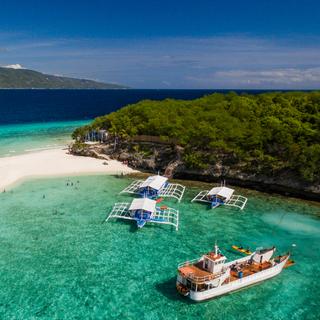
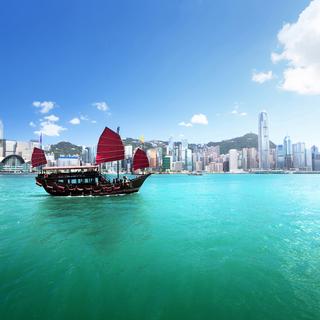

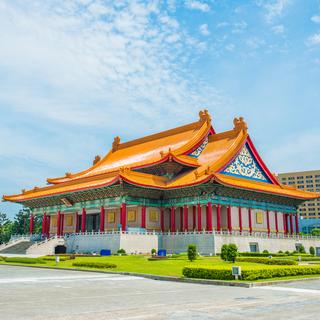
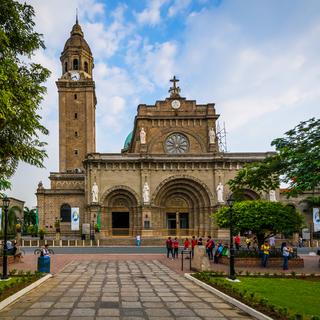



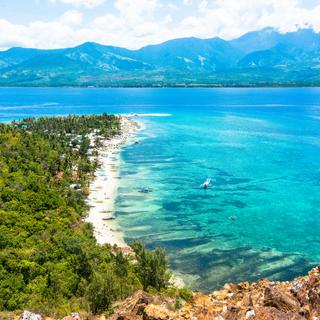
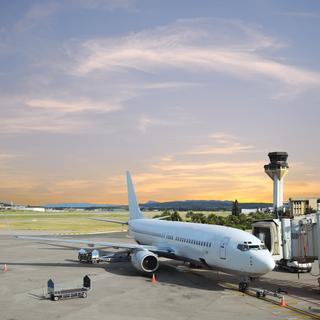







































 Facebook
Facebook Instagram
Instagram TikTok
TikTok Youtube
Youtube
